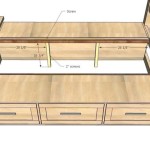How to Build a Simple Full-Size Platform Bedrock
A platform bedrock provides a stable and level foundation for various structures, from sheds and patios to larger buildings. This article details the process of constructing a simple, full-size platform bedrock suitable for a variety of applications. The bedrock described here uses readily available materials and basic construction techniques, making it a manageable project for those with some DIY experience.
Before beginning construction, obtaining the necessary permits and approvals from local authorities is crucial. Regulations vary by location and ensuring compliance is essential. This may involve submitting plans and undergoing inspections at different stages of the project.
Planning and Preparation
Careful planning is paramount to a successful bedrock construction project. The first step involves determining the exact dimensions of the platform. This is dictated by the size and weight of the intended structure. Accurate measurements are critical to ensure the bedrock adequately supports the load.
Once the dimensions are established, site preparation begins. This involves clearing the designated area of vegetation, rocks, and debris. Leveling the ground is the next step. A slight slope can be incorporated to facilitate drainage and prevent water accumulation beneath the platform. The leveled area should extend slightly beyond the intended bedrock perimeter to accommodate formwork.
Material selection is another key element. The most common materials for a platform bedrock are concrete and reinforced steel. The concrete mix should be appropriate for the intended load and environmental conditions. Consulting with a local supplier can help determine the correct mix. Reinforcing steel, typically rebar, adds strength and prevents cracking. The thickness and spacing of the rebar should be calculated based on the expected load.
Constructing the Formwork
Formwork provides a mold for the concrete, shaping and supporting it until it cures. It can be constructed from various materials like wood, metal, or plastic. Wooden formwork is commonly used due to its availability and ease of use. The formwork should be sturdy enough to withstand the pressure of the wet concrete. It should be built to the exact dimensions of the platform and secured with stakes and braces to prevent movement during the concrete pour.
Prior to placing the rebar, a layer of gravel or crushed stone is typically laid within the formwork. This layer, known as the base, improves drainage and provides a more stable foundation. The thickness of this layer varies depending on the soil conditions and intended load.
Reinforcement and Concrete Pouring
Once the base is in place, the reinforcing steel is installed. The rebar should be tied together with wire at intersections to create a grid. Spacers or chairs are used to lift the rebar off the base, ensuring it is fully encased in concrete. The placement of the rebar should be precise to maximize its effectiveness.
With the rebar in place, the concrete can be poured. It’s important to pour the concrete evenly across the formwork, avoiding air pockets. A vibrator can be used to consolidate the concrete and eliminate voids. The concrete should be leveled with a screed or float to create a smooth and even surface.
Curing and Finishing
After pouring, the concrete needs time to cure. Curing is the process by which concrete hardens and gains strength. During this period, the concrete should be kept moist to prevent premature drying and cracking. This can be achieved by covering the concrete with plastic sheeting or by regularly spraying it with water. The curing time depends on the type of concrete and environmental conditions, typically ranging from several days to a few weeks.
Once the concrete has cured sufficiently, the formwork can be removed. Any imperfections in the surface can be addressed with grinding or patching. A sealant can be applied to protect the concrete from moisture and staining. The sealant choice will depend on the specific application and environmental factors.
Considerations for Different Structures
While the basic principles remain the same, building a bedrock for different structures requires specific considerations. For heavier structures, a thicker concrete slab and more robust reinforcement are necessary. The base preparation may also need to be more extensive, potentially involving soil compaction or the use of a geotextile fabric to improve stability.
For structures in areas with extreme temperatures, using concrete mixes designed for these conditions is crucial. This helps prevent cracking and ensures the bedrock's long-term integrity. Similarly, in areas with high water tables, incorporating drainage solutions into the bedrock design is vital. This might involve installing drainage pipes or incorporating a sloping surface to direct water away from the structure.
Finally, local building codes and regulations should be consulted throughout the entire process. These codes often dictate specific requirements for bedrock construction, including minimum thickness, reinforcement specifications, and permitted materials.

Simple 1 20 Fully Automatic Crop Farm Tutorial In Minecraft Bedrock Mcpe Xbox Ps4 Switch Windows10

How To Build A Mob Farm Trap Minecraft

Minecraft Bedrock Dedicated Server Resource Pack Rtx Guide

Minecraft Bedrock Upgradable Iron Farm Simple Working 440 Hour 1 20 Update Tutorial

How To Build An Iron Farm In Minecraft Bedrock Edition 1 18 2024

How To Use Fill Command In Minecraft 2024 Guide Beebom

Bedrock R7000 Fanless Industrial Pc Solidrun

Bedrock R7000 Fanless Industrial Pc Solidrun

How To Use Fill Command In Minecraft 2024 Guide Beebom

Minecraft Bedrock Upgradable Iron Farm Simple Working 440 Hour 1 20 Update Tutorial







